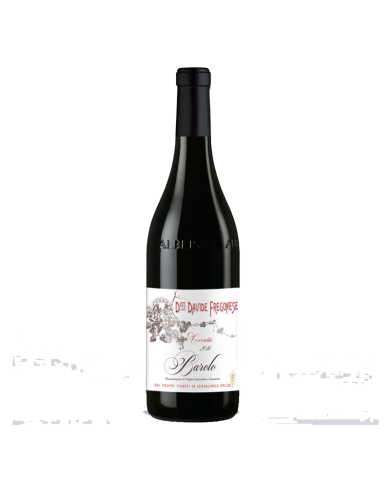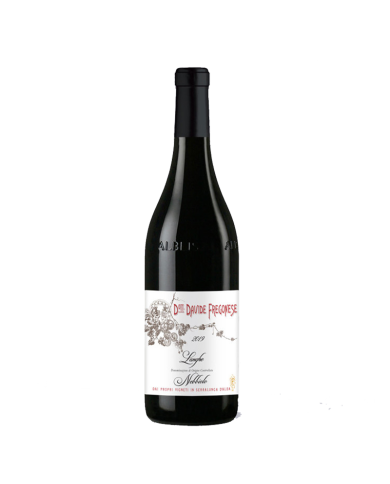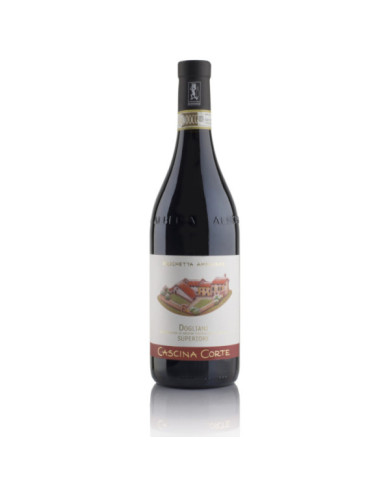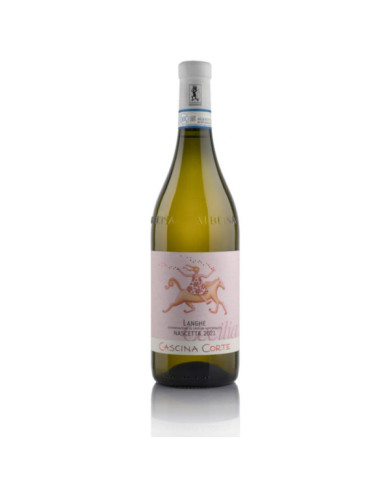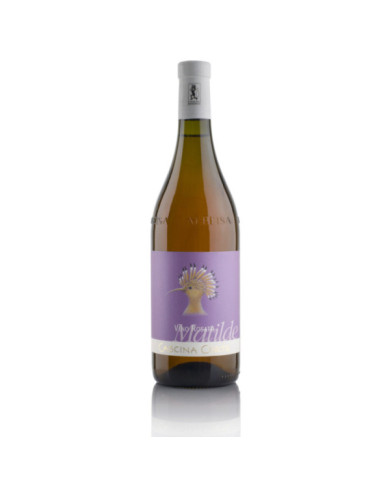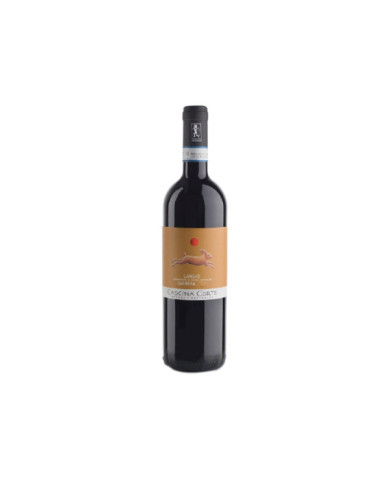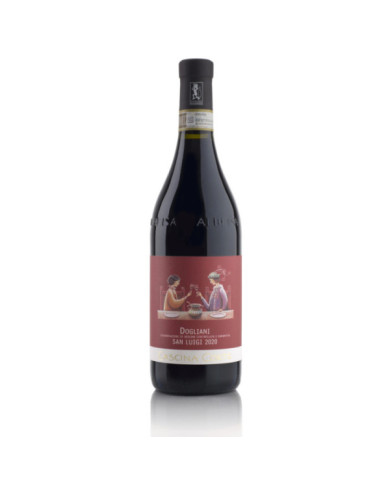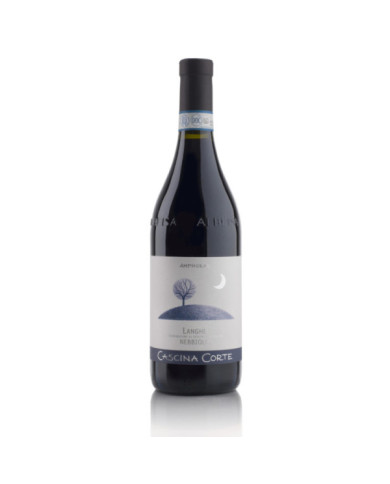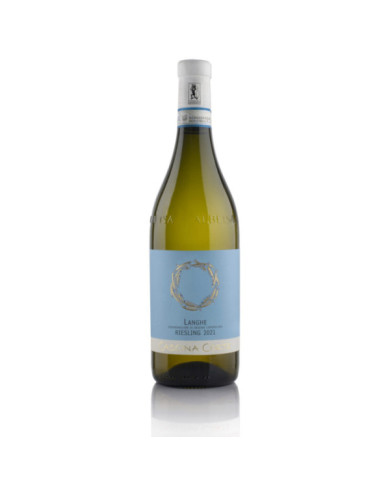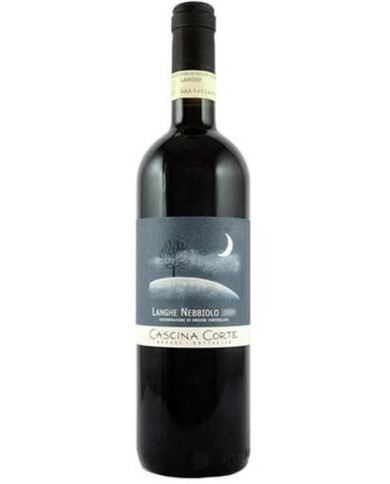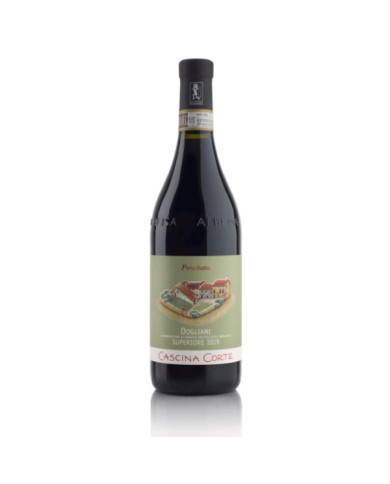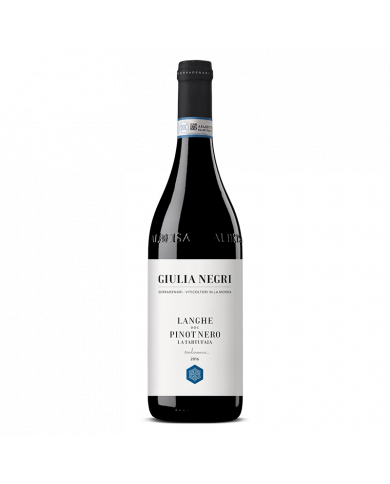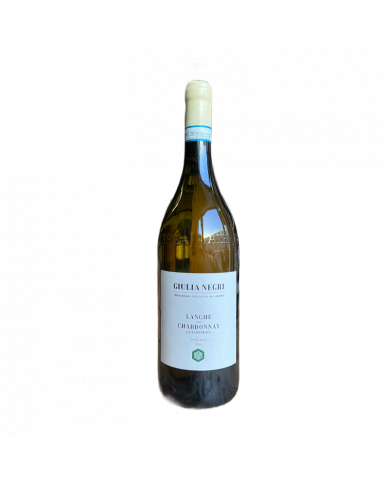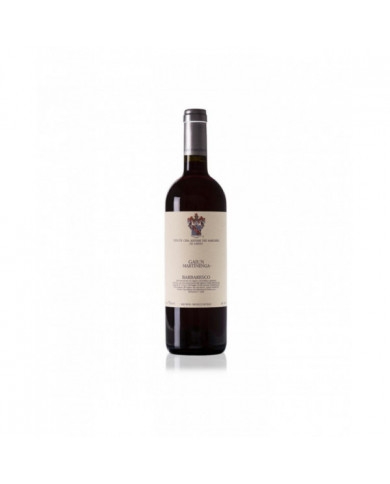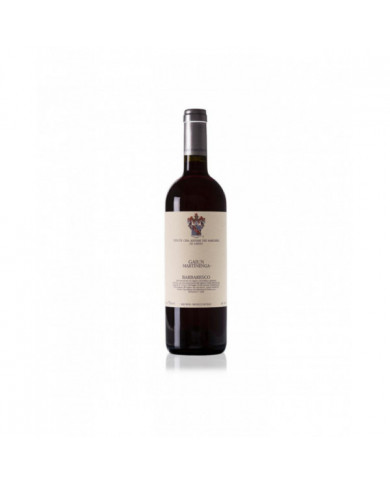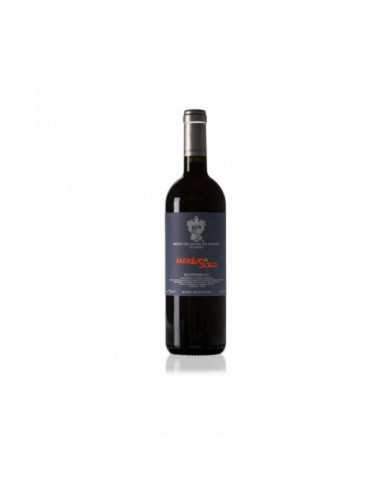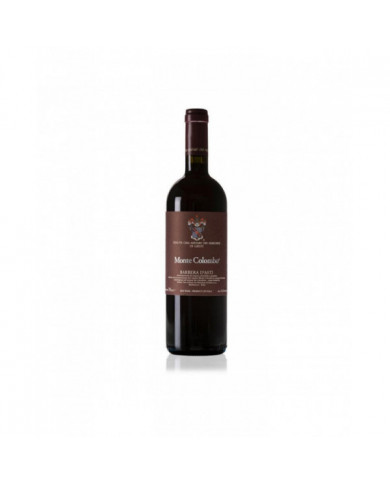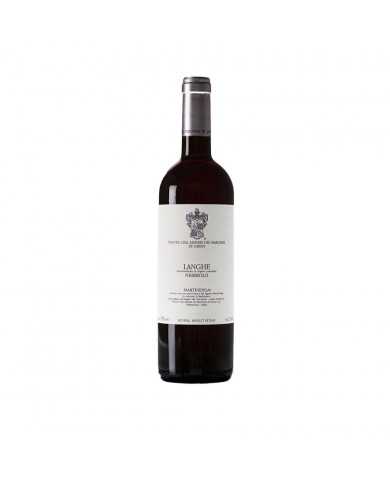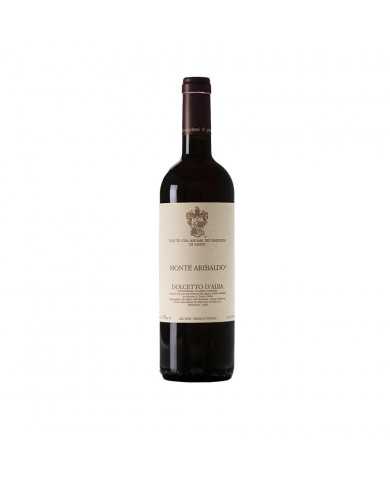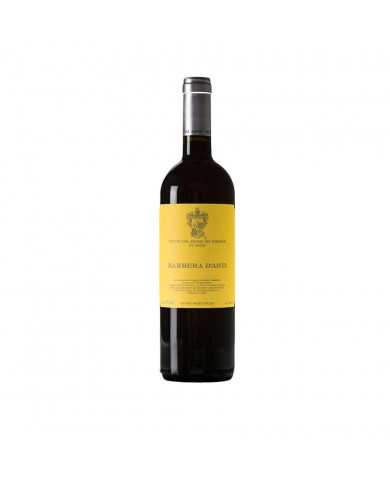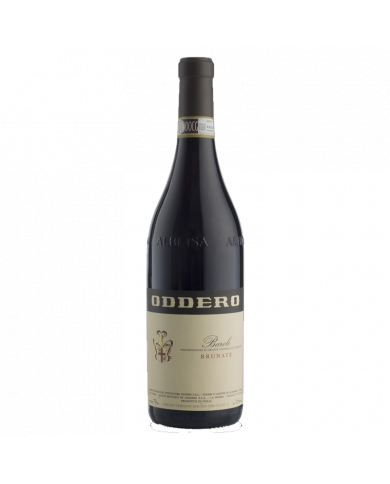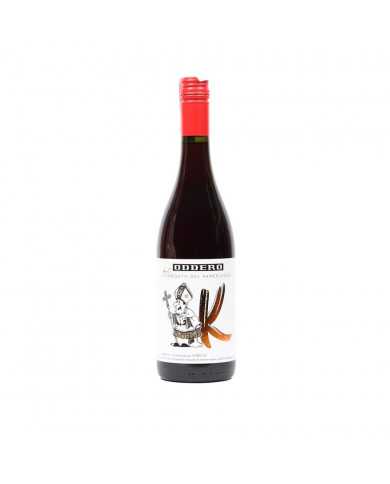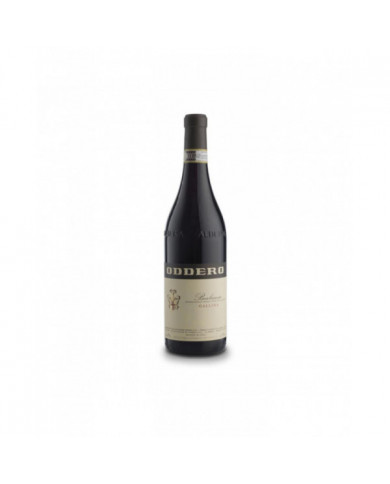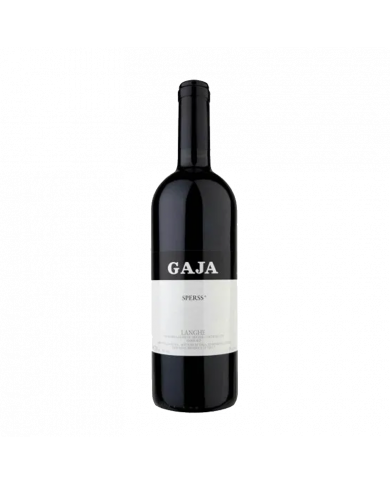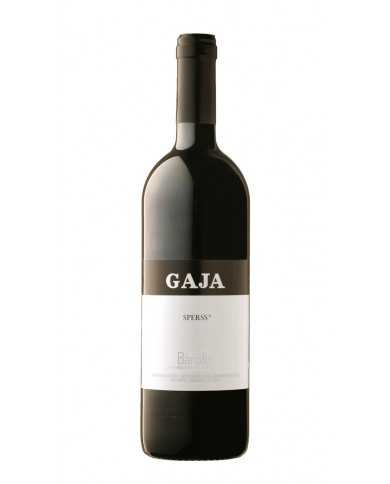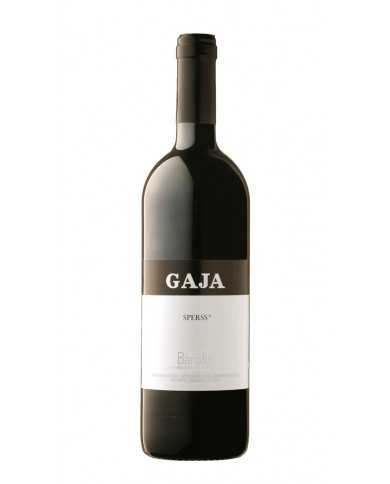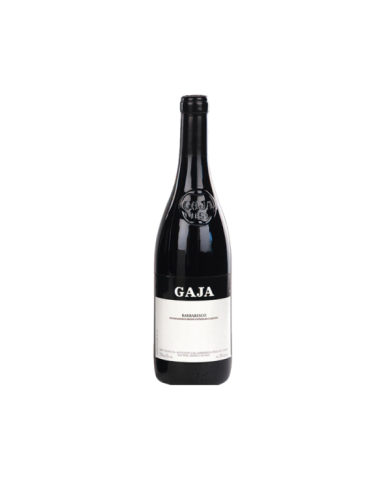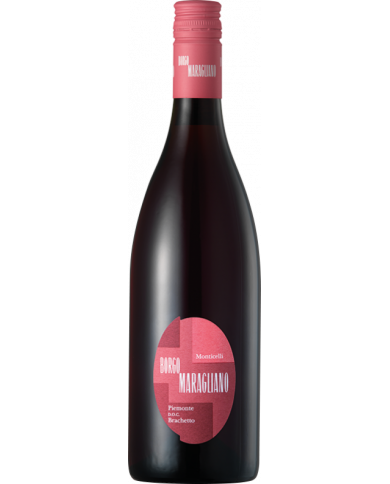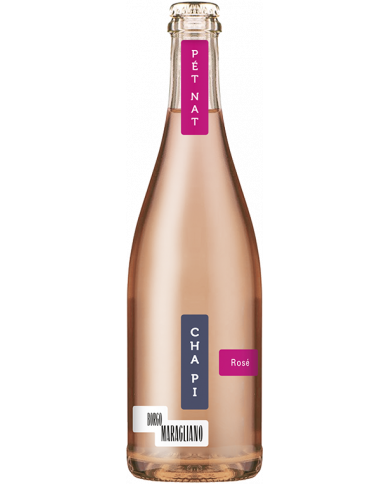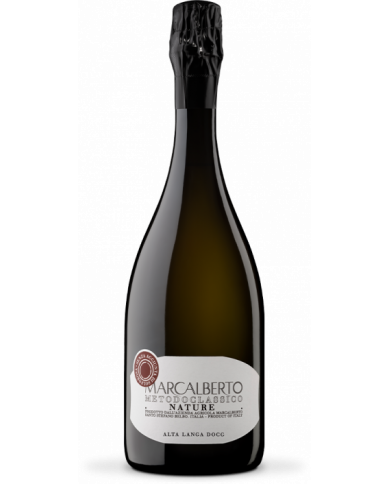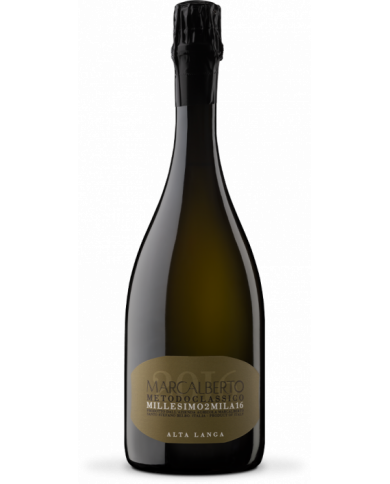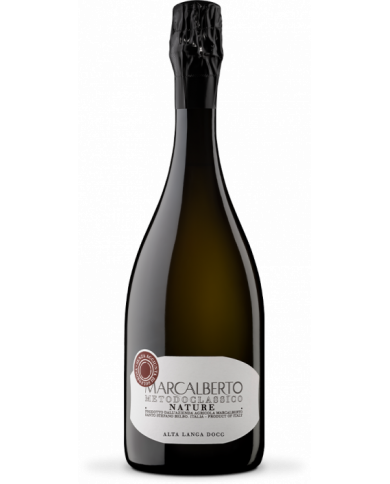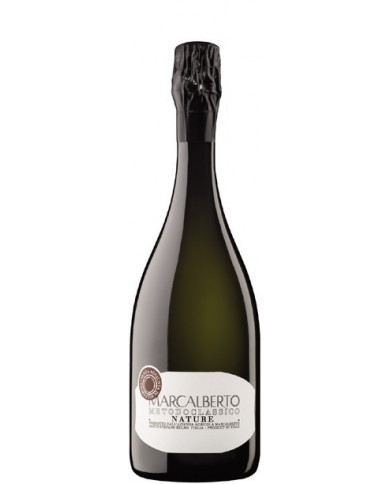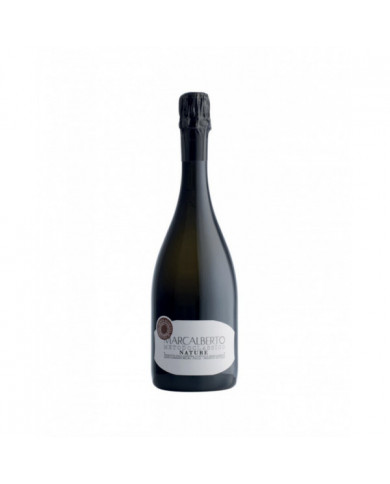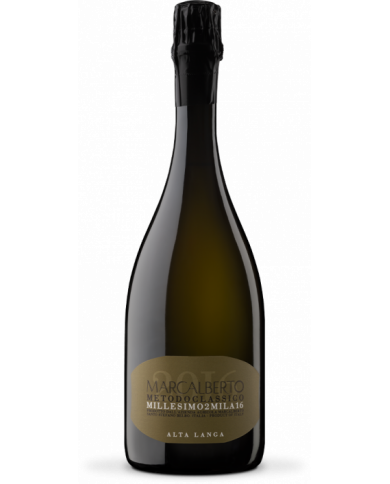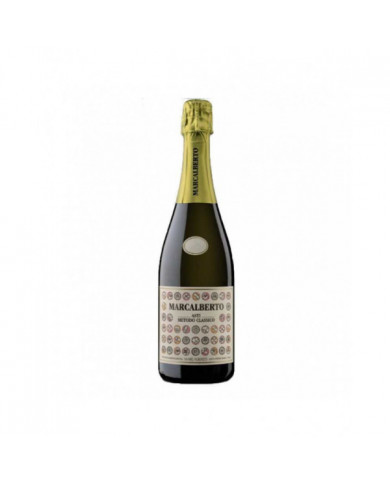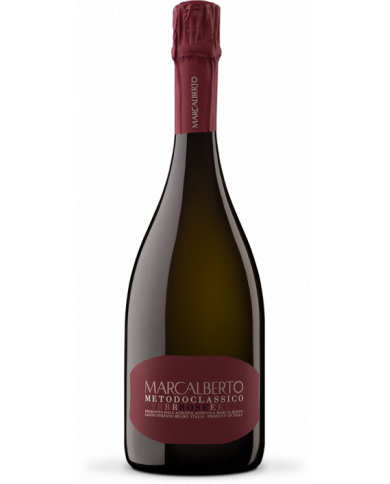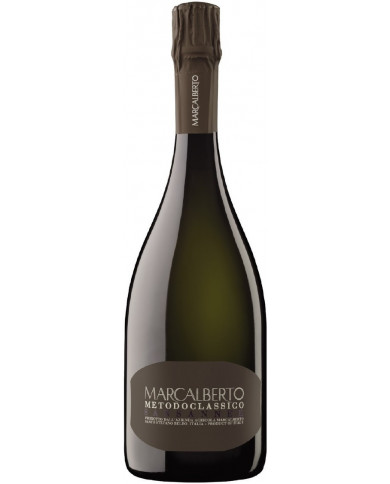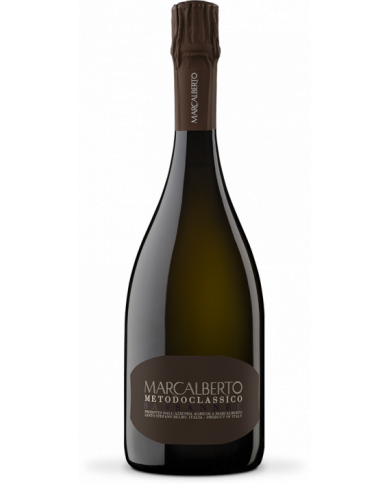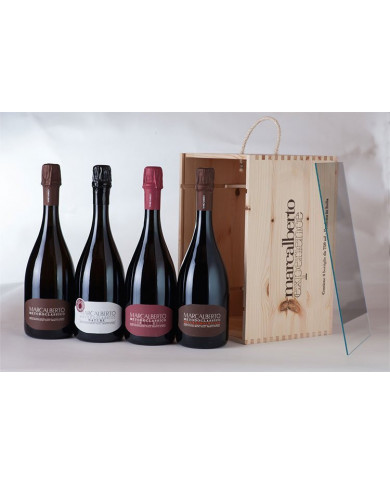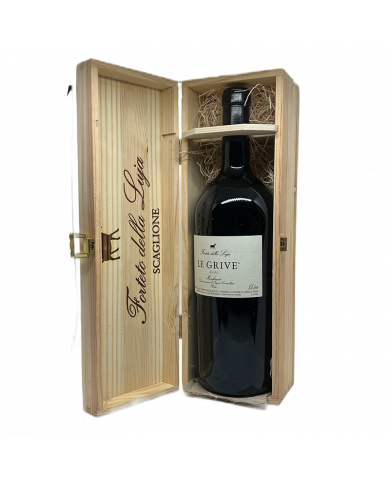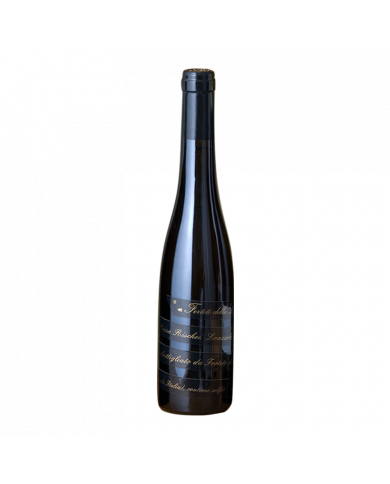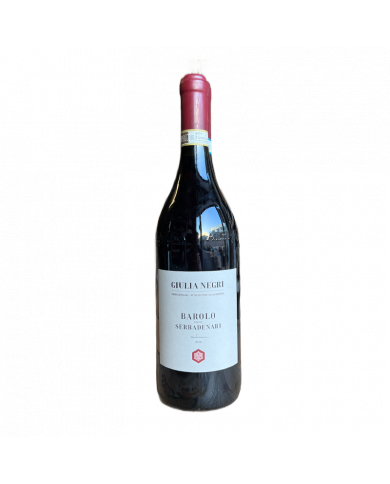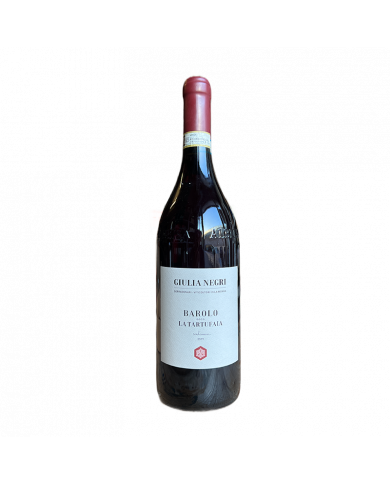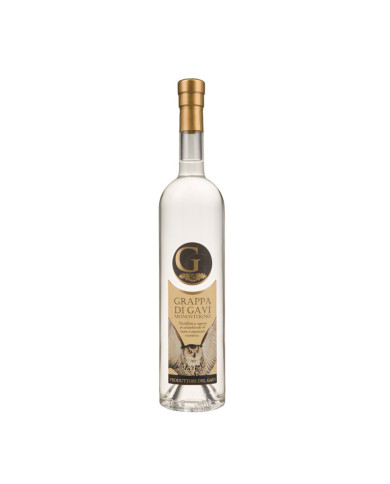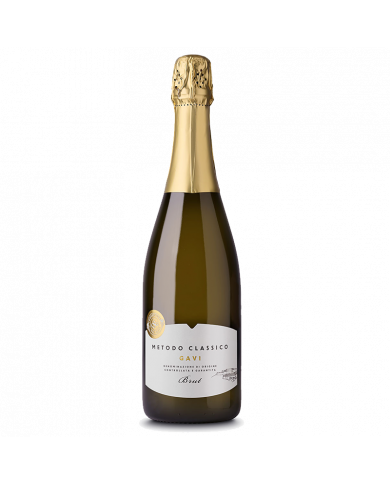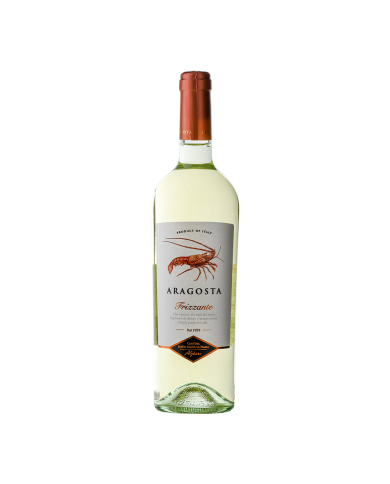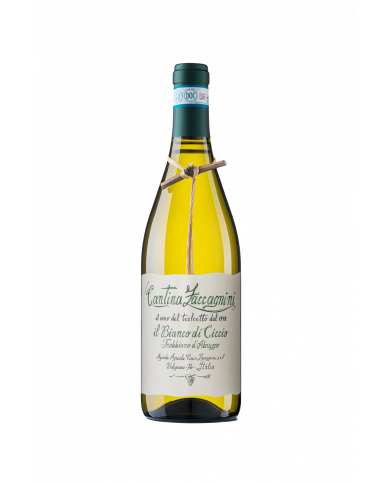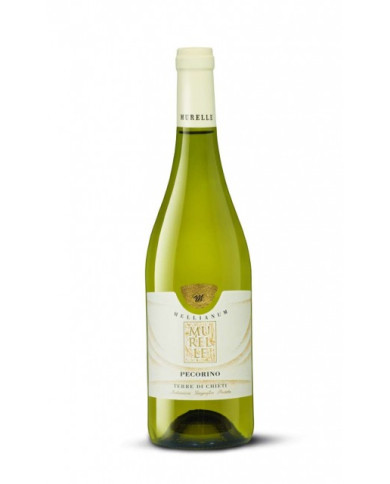Sweet white wine, it is the dessert wine par excellence. It has a more or less intense straw yellow color depending on the vintage, an intense, aromatic and very persistent fruity aroma. The sweet taste is in harmonious balance with the low alcohol content (5% vol.) and with the acidity, never very high, but which gives the product a pleasant freshness. PAIRINGS: fresh fruit (peaches, strawberries, berriesŌĆ”) panna cotta cream-based desserts.
The color is purplish-red with ruby-violet flashes. The nose is deep and vertical, with fruity aromas chasing each other to create an enveloping and balanced bouquet.
Dogliani San Luigi is obtained from the selection of various Dolcetto vines. It is a table wine with an immediate aroma of cherry, not too long in the mouth.
Garnet red colour. The nose opens on varietal hints of dried rose, violet and wet earth, which gives the wine a spicy aroma; fine and sweet in the mouth.
Giulia Negri 's Tartufaia is an elegant and full-bodied red wine produced from Pinot Noir grapes, aged for about 12 months in barrique: the apotheosis of Pinot Noir in the Langhe. It has an aromatic profile that at times recalls Burgundy, with elegant notes of red fruits, flowers and leather. The sip is enveloping, soft and complex, with great character and long persistence.
Gaiun is the part of the Martinenga vineyard that looks towards Asili, facing south-west; it is vinified on its own because it enjoys some differences both in the microclimate and in the soil that make it unique compared to the rest of the vineyard. The Barbaresco Gaiun Martinenga Marchesi di Gresy has an international winemaking style, with the search for concentration and an aging of almost 30 months in barrique, which smooths out the sharp edges of the Nebbiolo and gives us a delicious wine.
Born in 2001 from the Monte Colombo vineyard in Cassine, it is produced only in the best annate.Vino with an imposing and harmonious structure, with notes of raspberry and ripe cherry. Excellent in combination with first courses and red meats with tasty seasonings. Ideal with medium-aged cheeses.
Produced with grapes coming from the same vineyard from which Barbaresco is obtained, the Langhe DOC "Martinenga" by Marchesi di Gr├©sy has all the character and elegance of the great Nebbiolo, with intense and very fine aromas. Refined in concrete or steel, it offers liveliness and pleasantness on the sip.
The Chardonnay of the Marchesi di Gresy is a white with great structure, a Piedmontese expression of a classic Burgundian. The grapes are grown on Monte Aribaudo near Treiso and then the must ages for a long period in wood, a full 22 months, an aspect that gives body, softness and tertiary notes of spices and toasting. Peculiar the pleasant sapidity that accompanies the sip and persists for a long time
Typology Fortified wine
Capacity 0.75L
Alcohol content 14.5 ┬░
Piemonte region
Sweet sparkling wine obtained from the Brachetto vine, an ancient and complex aromatic grape present only in the Acquese area, characterized by unique and inimitable aromas. The cold maceration of the fruits and the subsequent soft pressing allow the extraction of the intense typical aromas contained in the peel and the characteristic pale ruby red color. A pleasant wine, extraordinarily elegant.
Cremes in Piedmontese dialect indicates the crimson, bright red color of ancient silks. Simple and elegant wine to make every event a special occasion. Aging in oak barrels for 6 months. It expresses fresh sensations of red fruit, black cherries and small berries. The sip is soft and enveloping, supported by a youthful freshness and a dense but gentle tannic texture.
Sito Moresco di Gaja is a red wine obtained from Nebbiolo, Barbera and Merlot grapes, which respectively give it elegance, freshness and softness. On the nose there are fruity hints, of small wild red fruits, and herbaceous and vegetable notes. On the palate it denotes a pleasant finesse, it is harmonious, with subtle and balanced tannins on the sip
Sito Moresco di Gaja is a red wine obtained from Nebbiolo, Barbera and Merlot grapes, which respectively give it elegance, freshness and softness. On the nose there are fruity hints, of small wild red fruits, and herbaceous and vegetable notes. On the palate it denotes a pleasant finesse, it is harmonious, with subtle and balanced tannins on the sip
Bright ruby ŌĆŗŌĆŗgoblet. On the nose, a complex and elegant bouquet and a profile that expands and changes minute after minute. First nose chiseled with delicate flowers and sweet spices, followed by a slight fruit, a touch of ginger and a hint of verbena and mint. The mineral voice and the closing notes of tobacco are surprising. The taste has class and tension: classic, aristocratic, it is both graceful and austere. Three-dimensional mouth, which develops progressively, maintaining an unmistakable elegance and personality.
Bright ruby ŌĆŗŌĆŗgoblet. On the nose, a complex and elegant bouquet and a profile that expands and changes minute after minute. First nose chiseled with delicate flowers and sweet spices, followed by a slight fruit, a touch of ginger and a hint of verbena and mint. The mineral voice and the closing notes of tobacco are surprising. The taste has class and tension: classic, aristocratic, it is both graceful and austere. Three-dimensional mouth, which develops progressively, maintaining an unmistakable elegance and personality.
Bright ruby ŌĆŗŌĆŗgoblet. On the nose, a complex and elegant bouquet and a profile that expands and changes minute after minute. First nose chiseled with delicate flowers and sweet spices, followed by a slight fruit, a touch of ginger and a hint of verbena and mint. The mineral voice and the closing notes of tobacco are surprising. The taste has class and tension: classic, aristocratic, it is both graceful and austere. Three-dimensional mouth, which develops progressively, maintaining an unmistakable elegance and personality.
Barolo "Sperss" is a famous label from the Gaja winery, produced since 1988 from the vineyards of Serralunga d'Alba. It is an intense, rich and very elegant red wine, with territorial aromas of violets, humus and berries and a balanced, structured, fresh, soft and persistent sip
Barolo "Sperss" is a famous label from the Gaja winery, produced since 1988 from the vineyards of Serralunga d'Alba. It is an intense, rich and very elegant red wine, with territorial aromas of violets, humus and berries and a balanced, structured, fresh, soft and persistent sip
Founded in 1859 by Giovanni Gaja , the homonymous winery is probably the symbol of the Langhe, with all its history and the legacy it hands over to posterity. Led with passion, strength and tenacity by Angelo Gaja together with his children, Gaia, Rossana and Giovanni, it is one of the most important companies for the production of Barbaresco.
Founded in 1859 by Giovanni Gaja , the homonymous winery is probably the symbol of the Langhe, with all its history and the legacy it hands over to posterity. Led with passion, strength and tenacity by Angelo Gaja together with his children, Gaia, Rossana and Giovanni, it is one of the most important companies for the production of Barbaresco.
Founded in 1859 by Giovanni Gaja , the homonymous winery is probably the symbol of the Langhe, with all its history and the legacy it hands over to posterity. Led with passion, strength and tenacity by Angelo Gaja together with his children, Gaia, Rossana and Giovanni, it is one of the most important companies for the production of Barbaresco.
Grape variety: CHARDONNAY 100% fermentation in stainless steel tanks Altitude: 410 meters slm Slope: 17% facing East Training system: Low Guyot Soil: 30% tufa - 68% sandstone - 2% calcium Average yield per hectare: 55 hl.
Grape variety: CHARDONNAY 100% fermentation in stainless steel tanks Altitude: 410 meters slm Slope: 17% facing East Training system: Low Guyot Soil: 30% tufa - 68% sandstone - 2% calcium Average yield per hectare: 55 hl.
Grape variety: RIESLING RENANO 100% fermentation in stainless steel tanks Altitude: 540 meters slm Slope: from 30% to 65% facing South - South East Training system: Low Guyot Soil: 60% tuffaceous - 38% sandstone - 2% calcium and gypsum ŌĆŹAverage yield per hectare: 62 hl.
Grape variety: PINOT NERO 100% fermentation in stainless steel tanks Altitude: 410 meters slm Slope: 17% facing East Training system: Low Guyot Soil: 60% tuff - 38% sandstone - 2% calcium Average yield per hectare: 55 hl.
Grape variety: PINOT NERO 100% fermentation in stainless steel tanks Altitude: 410 meters slm Slope: 17% facing East Training system: Low Guyot Soil: 60% tufa - 38% sandstone - 2% calcium Average yield per hectare: 60 hl.
Grape variety: CHARDONNAY 100% fermentation in stainless steel tanks Altitude: 410 meters slm Slope: 17% facing East Training system: Low Guyot Soil: 30% tufa - 68% sandstone - 2% calcium Average yield per hectare: 55 hl.
Grape variety: 100% MOSCATO BIANCO DI CANELLI Altitude: 480 meters slm level Slope: 67% with South West exposure Training system: Low Guyot Soil: 45% tuffaceous - 48% sandstone - 7% calcium Average yield per hectare: 19 hl.
Grape variety: CHARDONNAY 100% fermentation in stainless steel tanks
Altitude: 580 meters slm level Slope: 26% with North West exposure Training system: Low Guyot Average yield per hectare: 45 hl.
CHA PI is a wine that comes from the union of Chardonnay and Pinot Noir, the two vines from which the synthesis of the name originates. The RITUAL of turning the bottle upside down allows the most noble part of the yeasts adhering to the bottom to mix with each other, enriching the taste of the wine.
Grape variety: CHARDONNAY 100% fermentation in stainless steel tanks Altitude: 410 meters slm Slope: 17% facing East Training system: Low Guyot Soil: 30% tufa - 68% sandstone - 2% calcium Average yield per hectare: 65 hl.
Grape variety: 100% CANELLI WHITE MOSCATO
Altitude: 360 meters slm level Slope: 32% with South West exposure
Training system: Low Guyot
Soil: 45% tuffaceous - 48% sandstone - 7% calcium ŌĆŹ
Average yield per hectare: 65 hl.
We have tried to make the production process of this grape must as simple as possible, in order to maintain the primary, exclusive characteristics of the Moscato grape. The must obtained by softly pressing the grapes is placed in a cold room at a temperature of 0 ┬░C. The real processing of this product simply consists in taking it from the cold room and placing it in the autoclave where it will undergo an initial increase in temperature (up to 15 ┬░C) and subsequently a fermentation such as to transform just 3% vol. of alcohol. The grape must which has now become El Cali├® will then undergo a lowering of temperature to 0 ┬░C, a small stop in the autoclave once the fermentation is now completed and the subsequent bottling.
Grape variety: 100% CHARDONNAY
Altitude: 390 meters slm
Slope: 18% with North East exposure
Training system: Low Guyot
Soil: 30% tuffaceous - 68% sandstone - 2% calcium ŌĆŹ
Average yield per hectare: 65 hl.
Inspired on a summer evening by a particular bottle of Champagne. From that spark began a bet with ourselves. To give birth also in our company to a sparkling wine without added sulphites. It took years of experimentation, in which we have traveled many untraced roads, before being able to put our Nature on the market on an ongoing basis. Monovitigno with black grapes was the first Italian Classic Method without added sulphites produced in a serial way.
The vintage, as opposed to the Sansann├®e, indicates the single vintage from which the wine contained in the bottle comes. Always produced from a careful internal selection of the bases, produced in a specific harvest. This wine's main intention is to enhance and best tell the various peculiarities that each vintage has to express.
' the title of a great little work by Cesare Pavese, noble son and unforgettable intellect of our land. The only wine produced that does not follow the ŌĆ£Metodo ClassicoŌĆØ line. Born from the need to produce a Pino Nero vinified in red that could then be assembled for the production of the Ros├® Classic Method. A small part of it is bottled so as to allow you to discover, from another perspective, the sensory and gustatory soul of our lands.
Olfactorily it is revealed through a unique aroma, where the reference to the Moscato grape from which it comes, is presented in all its articulated bouquet: apple, pear, light citron peel, fresh sponge cake and a nuanced background of sage.
One of a Kind Chardonnay. It is dedicated to the owner's grandfather, from whom the adventure of the Bovio family in the world of wine began. Born In 1998 From An Experiment, It Is Appreciated To Such A Point That Since Then It Has Been Considered A "Chicca" Of The Cellar.
Limited production commemorative fiat racing team. A gift idea: wines with automotive design!
Piasa Rischei is the wine produced solely with Moscato grapes, left to dry on the vine and harvested at the end of October, a part of the bunches is still left to dry on mats in an orchard. After fermentation, the wine is aged in barriques for 24 months. A passito balanced between freshness and sweetness. Great evolutionary capacity. Perfect to combine with cheeses and fois gras.
We are at Morra, Serradenari, on soils from the Messinian period with a sandy loam texture with a strong presence of calcareous marl. At about 480m with a south-west exposure, the pure Nebbiolo grapes are vinified with spontaneous fermentation in truncated cone-shaped vats, macerating for about 40 days. The wine then ages for 30 months in 25-hectolitre Slavonian oak barrels.
Giulia Negri 's Barolo "La Tartufaia" is the producer's personal vision of the "La Morra" area who skilfully transforms the Nebbiolo grapes into an important and elegant red wine, with a deep and fine taste. On the nose the aromas are of red fruit, berries with notes of tobacco and licorice. On the palate it is full-bodied, enveloping with silky tannins and earthy and bloody sensations that close the sip.
Produced from pomace obtained exclusively from Cortese grapes. Steam distilled in copper stills and continuous system. Alcohol content 40% vol.
SPARKLING WINE OBTAINED WITH THE CLASSIC METHOD. REFERMENTATION TAKES PLACE IN THE BOTTLE FOR APPROXIMATELY 30 DAYS AT A TEMPERATURE OF 13┬░C, AFTER WHICH THE WINE AGES FOR 30 TO 40 MONTHS ON LEES OF YEAST. COMPLETELY MANUAL WORKING. STARTERS AND CAKES, BUT IT'S ALSO EXCELLENT FOR ALL MEALS.
SPARKLING WINE OBTAINED WITH THE CLASSIC METHOD. REFERMENTATION TAKES PLACE IN THE BOTTLE FOR APPROXIMATELY 30 DAYS AT A TEMPERATURE OF 13┬░C, AFTER WHICH THE WINE AGES FOR 30 TO 40 MONTHS ON LEES OF YEAST. COMPLETELY MANUAL WORKING. STARTERS AND CAKES, BUT IT'S ALSO EXCELLENT FOR ALL MEALS.
SPARKLING WINE OBTAINED WITH REFERMENTATION IN AUTOCLAVE METHOD CHARMAT FOR 20/25 DAYS, STRAW YELLOW COLOR WITH FINE PERLAGE. FRUITY NOSE WITH NOTES OF APPLE AND YELLOW PEACH NEXT TO A TOUCH OF ACACIA FLOWERS. ON THE PALATE IT IS HARMONIOUS AND FRESH WITH GOOD INTENSITY. EXCELLENT AS AN APERITIF WITH STARTERS, CAKES AND DESSERTS, BUT ALSO ENJOYABLE WITH ALL MEALS.
STRAW YELLOW COLOUR. NOTES OF PEAR, PEACH, APRICOT AND YELLOW PLUM STAND OUT ON THE NOSE. TO THE MOUTH IT IS FRESH, SAPID, DRINKABLE, WITH A LIGHT NOTE OF ALMOND IN THE FINISH.
INTENSE COLOR WITH GRENADE REFLECTIONS AND INTENSE SCENT OF MARASCA AND PLUM. ON THE PALATE IT HAS EXCELLENT ACIDITY AND GOOD BODY, HARMONIOUS AND BALANCED. GREAT STRUCTURE. PERFECT WITH TASTY FIRST COURSES AND SECONDS OF RED MEAT AND GAME.
INTENSE RED COLOR WITH GARNET REFLECTIONS. THE NOSE IS FRUITY AND ELEGANT, WITH AROMAS OF RIPE PLUM AND MARASCA MARASCA AND HINTS OF VIOLET. YOUNG ON THE PALATE, RICH IN PULP, EXCELLENT ACID FRESHNESS. EXCELLENT WITH TASTY FIRST COURSES, RED MEAT AND GAME.
Discover the magic of Piedmont wines: savor the taste of tradition!
Piedmont is one of the best known Italian regions for the production of excellent wines. Piedmont's winemaking tradition has developed over the centuries and the wines produced in the region are appreciated all over the world.
The origins of Piedmont wine
Piedmont wine has ancient origins. The region, located in the north-western part of Italy, has a temperate climate which lends itself to the production of quality wines. The first documents referring to the wines of Piedmont date back to the Middle Ages, when the princes of the region invited their guests to taste their wines.
Piedmont wine styles
Piedmont wine styles are very diverse. The best known wines are the red wines Barolo and Barbaresco, both based on Nebbiolo, a vine native to the region. Red wines from Piedmont are generally more full-bodied, with complex aromas ranging from berries to spices, and have good acidity which makes them suitable for ageing.
Besides red wines, Piedmont is also famous for its white wines, such as Gavi and Arneis . These wines are lighter and have less tannins than red wines, but are just as tasty.
What are the most famous Piedmontese wines?
The wines of Piedmont are appreciated all over the world and are considered among the best wines of Italy. Among the best known are Barolo, Barbaresco, Gavi, Arneis , Dolcetto and Barbera. These wines have been enjoyed by generations of wine lovers and are a must for anyone who wants to discover the winemaking tradition of Piedmont.
How to best savor the wines of Piedmont
The wines of Piedmont are wines to be tasted slowly. The tasting must be done in a quiet environment and with the use of glass glasses suitable for wine tasting. The serving temperature is essential to get the most out of the wine: white wines should be served cold (8-10┬║C) while red wines should be served at a higher temperature (16-18┬║C).
To better appreciate the wines of Piedmont, it is important to know the flavors and aromas of each wine. You should try to identify the aromas and flavors of each wine, such as berries, spices, herbs and earthy notes. This will help you better understand how wines pair with food and how to choose the most suitable wines for a given occasion.
Taste the tradition with the wines of Piedmont
Tasting the wines of Piedmont is a unique experience. It will let you discover the flavors and aromas of a millenary winemaking tradition that has made Piedmont one of the best-known places in the world for the production of quality wines.
Choose a wine from Piedmont and savor all the magic and taste of tradition!
Denomination Vini del Piemonte: A Journey Into the World of Wine
Piedmont is a region located in northwestern Italy that stretches from the Alps to the Po. This region is famous for its natural beauty, culture, history and, above all, for the production of high quality wines. In this guide, you will discover everything there is to know about the denomination of Piedmont wines, from the grape varieties to the main wines produced and their characteristics.
Introduction to the appellation of Piedmont wines
The denomination of wines of Piedmont is a system of classification of wines based on their origin, the variety of grapes used and the production methods. There are three levels of appellation for the wines of Piedmont: DOCG (Controlled and Guaranteed Designation of Origin), DOC (Controlled Designation of Origin) and IGT (Typical Geographical Indication).
IGT extension
The IGT is the lowest denomination and covers the entire Piedmont region. This appellation allows producers to use grapes from other regions and to experiment with new winemaking techniques. IGT wines can have very different characteristics, depending on the variety of grapes and the techniques used.
DOC
The DOC designation is reserved for wines produced in specific areas of Piedmont and which meet specific production criteria. These wines must be produced with a certain grape variety, they must be aged for a specific period and they must respect specific production criteria.
DOCG
The DOCG denomination is the highest in the hierarchy of the denomination of wines of Piedmont. This appellation is reserved for wines that represent the best of Piedmont and that have an international reputation. DOCG wines are produced in specific areas of Piedmont, using specific grape varieties and following strict production criteria.
The grape varieties of Piedmont
Piedmont is famous for its large variety of native grapes, some of which are used to produce some of the finest wines in the world. Here are some of the most important grape varieties of Piedmont:
Nebbiolo
Nebbiolo is Piedmont's most important grape variety and is used to produce some of the region's most famous wines, such as Barolo and Barbaresco. This grape variety is known for its fruity flavor and tannic character.
Barbera
Barbera is the second most important grape variety in Piedmont and is used to produce highly regarded red wines, such as Barbera d'Alba and Barbera d'Asti.
The main wines of Piedmont
Piedmont is famous for producing some of the finest wines in the world, which are known for their unique flavor and distinctive characteristics. Here are the main wines produced in the region:
Barolo
Barolo is the king of Piedmont wines and is produced with Nebbiolo grapes grown in the hills of the municipality of Barolo. This wine is famous for its fruity and complex flavour, its tannic character and its intense ruby red colour. Barolo is aged in wooden barrels for a minimum of three years and has an alcohol content of approximately 13%.
Barbaresco
Barbaresco is another great red wine from Piedmont produced with Nebbiolo grapes. This wine has a similar flavor to Barolo, but is a little softer and lighter. Barbaresco is aged for at least two years and has an alcohol content of around 13%.
Barbera d'Alba
Barbera d'Alba is a red wine produced with Barbera grapes and cultivated in the Langhe area. This wine has a fruity flavor and an alcohol content of approximately 12.5%. Barbera d'Alba is aged for at least one year in wooden barrels.
Moscato d'Asti
Moscato d'Asti is a sweet white wine produced with white Moscato grapes grown in the Langhe area. This wine has a fruity and fresh taste and is perfect as an aperitif or dessert. Moscato d'Asti has an alcohol content of approximately 5%.
Piedmont is a very important wine region that offers some of the finest wines in the world. The DOCG, DOC and IGT denominations represent a wine classification system that guarantees the quality and origin of the products. Each grape variety has its own distinctive characteristics, which give the wines of Piedmont their unique flavor and distinctive qualities. If you are a wine lover, a visit to the cellars of Piedmont is an experience that you must not miss.
Frequent questions
What are the most important grape varieties in Piedmont?
The most important grape varieties of Piedmont are Nebbiolo, Barbera and white Moscato.
What is the most famous wine of Piedmont?
The most famous wine of Piedmont is Barolo.
What does the DOCG denomination mean?
The DOCG denomination means Denomination of Controlled and Guaranteed Origin and is the highest in the hierarchy of the Piedmont wine denomination.
What are the main wine production areas of Piedmont?
The main areas of production of Piedmontese wines are the Langhe


